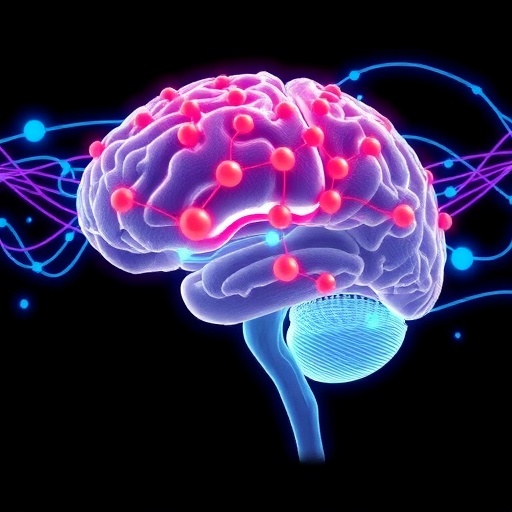
A novel advancement in the field of diabetes research has emerged from the scientific community at The Second Affiliated Hospital of Zhejiang University School of Medicine. Their recent study explores the groundbreaking application of Ultrasound Localization Microscopy (ULM) for monitoring Type 2 Diabetes progression and evaluating the effectiveness of anti-cytokine immunotherapy. This innovative imaging technique has opened new avenues for understanding the complexities of pancreatic microvasculature in patients suffering from this chronic condition.
Traditionally, Type 2 Diabetes has been characterized as an autoimmune-inflammatory disease, where extended periods of inflammation contribute to the detriment of pancreatic islet microvasculature. This reorganization has been correlated directly with the dysfunction of insulin-producing β-cells, leading to significant implications for glucose regulation and overall metabolic health. Recognizing the critical need for advanced imaging modalities that surpass the limitations of popular techniques like functional MRI and Doppler ultrasound, the researchers turned to ULM, which promises enhanced resolution to capture microscopic details.
The study, recently published on March 10, 2025, in the esteemed journal Cyborg and Bionic Systems, underscores the importance of monitoring pancreatic microvasculature in vivo. With ULM providing high-resolution images, the research team was able to derive meaningful insights into the ongoing changes in β-cell mass and functionality throughout the progression of Type 2 Diabetes. These observations are imperative for developing innovative treatment strategies that could potentially reverse or halt the disease’s advance.
Specifically, the research employed a rat model of Type 2 Diabetes, induced through a combination of a high-fat diet and streptozotocin injection. This method provided an authentic representation of the disease, enabling detailed observations. Utilizing the potency of ULM imaging in conjunction with contrast-enhanced ultrasound, the researchers visualized microvascular morphology and hemodynamics with unparalleled precision. This combination not only facilitated high-resolution imaging but also enabled the tracking of microbubble trajectories, which are critical for analyzing vascular parameters such as tortuosity and vessel density.
One of the revelations brought to light by this study is the nuanced relationship between pancreatic blood flow and β-cell functions in the context of Type 2 Diabetes. By quantifying vascular parameters, researchers gained the ability to monitor disease progression intricately. The data derived holds significant implications for understanding how microvascular alterations impact insulin secretion and overall glucose metabolism.
Moreover, the investigation did not solely focus on the disease’s progression but also examined therapeutic interventions. Anti-cytokine immunotherapy agent XOMA052 was evaluated based on its potential to ameliorate β-cell functionality through restoration of the microvascular environment. Results indicated significant improvements in microvascular structure and function, suggesting a therapeutic pathway that could enhance the quality of life for individuals living with Type 2 Diabetes.
The study’s findings advocate for the integration of novel imaging techniques such as ULM into clinical practices aimed at early diagnosis and treatment monitoring. The researchers contended that ULM’s ability to provide real-time, high-resolution imaging of microvascular morphology and function offers a compelling solution to previously insurmountable challenges faced in diabetes management. The potential utility of this technique transcends beyond just visual observations, positioning it as a fundamental tool for both diagnosis and assessing treatment efficacy.
However, challenges remain. The researchers acknowledged that the effectiveness of ULM could be hindered by the frame rate limitations associated with ultrasound systems, potentially skewing blood flow measurements. Furthermore, motion artifacts could compromise image quality and the resultant data, which leads to questions about the reliability of image reconstruction and quantification. Such limitations underscore the necessity for ongoing research aimed at refining imaging methods and ensuring their applicability in broader clinical contexts.
Additionally, a significant factor to consider is the disparity between animal models and human physiology. The model utilized in this study may not accurately reflect human diabetes pathology, which could impact the generalization of the findings to actual patient populations. This aspect necessitates further studies to confirm the applicability and effectiveness of ULM as a diagnostic tool for human subjects.
As this research contributes to the growing body of knowledge in diabetes management and treatment development, it highlights the collaborative spirit of modern scientific inquiry. The authors of the paper, including distinguished colleagues like Tao Zhang, Jipeng Yan, and others, have achieved remarkable strides in advancing our understanding of diabetes through innovative imaging techniques.
With financial backing from several prestigious organizations, including the National Natural Science Foundation of China and the Engineering and Physical Sciences Research Council, this study not only promotes further investigation into ULM but also expands the broader narrative of how emerging technologies can transform healthcare. The exploration of pancreatic microvasculature via ULM offers a pioneering lens through which researchers can evaluate and eventually change the future landscape of diabetes treatment.
As the landscape of diabetes research evolves, the implications of incorporating advanced imaging techniques like ULM promise to innovate how clinicians approach this chronic disease. The vision for future research could spotlight the intersection of diagnostic imaging and therapeutic strategies, ultimately enhancing patient care and outcomes.
Continued endeavors in this field will undoubtedly provide valuable insights that converge on improving the lives of millions affected by Type 2 Diabetes, affirming the critical role of science in combating this global health issue.
Subject of Research: Ultrasound Localization Microscopy for Type 2 Diabetes
Article Title: Application of Ultrasound Localization Microscopy in Evaluating the Type 2 Diabetes Progression
News Publication Date: March 10, 2025
Web References: Cyborg and Bionic Systems
References: National Natural Science Foundation of China (meant to be filled per context)
Image Credits: Tao Zhang, The Second Affiliated Hospital of Zhejiang University School of Medicine
Keywords: Type 2 diabetes, Ultrasound Localization Microscopy, anti-cytokine immunotherapy, microvasculature, imaging techniques.
Tags: advanced diabetes research techniquesanti-cytokine immunotherapychronic autoimmune-inflammatory diseasehigh-resolution imaging in diabetesin vivo imaging advancementsinnovative diabetes research methodsinsulin-producing β-cells dysfunctionmetabolic health implicationsmonitoring glucose regulationpancreatic microvasculature imagingType 2 Diabetes progressionUltrasound Localization Microscopy




